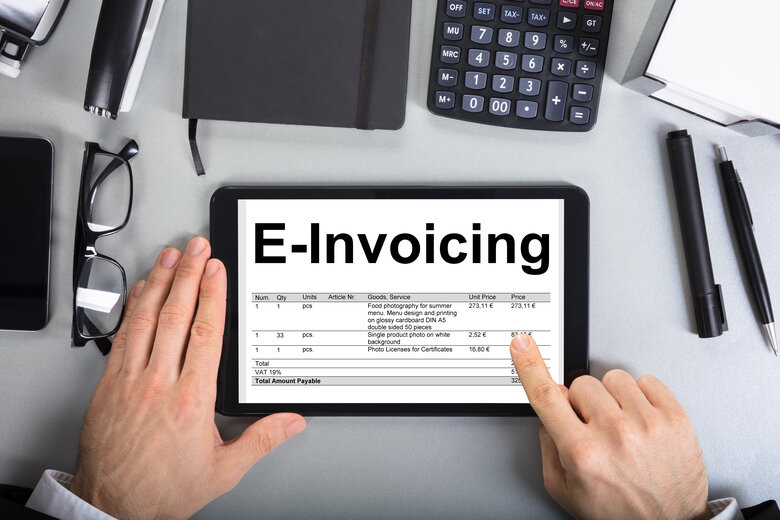
To help with the post-pandemic economic recovery, the Australian government is pursuing a technological opportunity worth billions of dollars to the economy, writes Chris Willcocks.

This might trigger thoughts of high-speed 5G infrastructure or the development of smart cities, but this potential windfall relates to a simple process that every Australian business does every day – sending and receiving invoices.
A Deloitte study estimates that replacing paper invoices with electronic ones, known as e-invoices, would deliver up to $20 of cost savings per invoice.
When you think about the volume of invoices that are currently posted or emailed every day, the potential savings are immense. It would also speed up payment times, one of the biggest pain points for small businesses, and remove the errors introduced by manually inputting invoices into multiple systems.
$28b in potential savings
With 1.2 billion invoices exchanged in Australia each year, the ATO estimates that e-invoicing could save the economy $28 billion dollars over 10 years. This is significant – particularly in a post-covid world, where the government is exploring any and all growth drivers.
According to the International Monetary Fund’s (IMF), Australia is currently in the midst of a remarkable post-covid recovery, with 4.5 per cent growth expected in 2021 and unemployment on the decline.
Legislating requirements for digital e-procurement and e-invoicing is one way for the government to help businesses transition to the “new normal” economy.
As something most businesses do in a day-to-day capacity, it’s an easy way for technology to have an immediate impact on bottom lines.
Noting the potential benefits to all businesses late last year, the government undertook a public consultation on options to accelerate the adoption of e-invoicing.
What is digital e-invoicing?
An e-invoice allows the automated digital exchange of invoices between the software systems of a supplier and a buyer, with little or no human interaction.
It also provides the ability to access and analyse the information remotely at any time. It’s also much more secure than paper or PDFs because companies need to be registered before they can send or receive invoices over the network.
In Australia and New Zealand, these e-invoices are exchanged over a secure network, using a protocol such as the internationally recognised Pan-European Public Procurement Online (PEPPOL) framework. This standard allows businesses with different accounting systems to seamlessly exchange and approve e-invoices.
That is why the federal government – which mandated that PEPPOL be used for all of its invoicing by June 2022 – is considering issuing a similar requirement for the private sector.
Government digitising its own procurement and encouraging the use of PEPPOL is an excellent start. But to deliver the full economic benefits, adoption of e-invoicing needs to be supported by a wider technology investment that encapsulates the entire procurement process, not just e-invoicing.
This more mature approach is called source-to-pay, and it involves an end-to-end digitisation of everything from identifying potential suppliers to creating contracts, buying seamlessly and paying correctly. Managing e-invoices is just one component.
True source-to-pay platforms – which can leverage the PEPPOL standard – will significantly add to the level of functionality (and value) the Government is looking for. As an example, PEPPOL cannot, by itself, confirm whether an invoice is linked to a valid purchase order or ensure it accurately reflects agreed contractual terms.
Additionally, on its own, PEPPOL cannot identify the cause of delay in payments, which is a major pain point for larger organisations that process thousands of transactions per month.
Without embracing broader source-to-pay infrastructure, the benefits to the economy from an economy-wide system of e-invoicing – from faster payment times to reduced payment disputes – will simply not be fully realised.
Getting businesses ready for an e-invoicing
Australian businesses need to be assessing the maturity of their current procurement and e-invoicing mechanisms and developing a strategy on how to update these with a comprehensive source-to-pay process as the end goal.
These benefits were realised at resource giant BHP, which totally transformed its procurement function – which involves $20 billion of annual spend across 10,000 suppliers – with source-to-pay infrastructure.
By utilising specialised software, BHP digitised its direct and indirect expenditure and procurement processes including buying, commerce automation and supply chain collaboration.
This transformation has driven a culture of collaboration amongst BHP and its suppliers, bringing procurement from a decentralised function into the heart of the business.
However, this wouldn’t have been possible without its source-to-pay platform. While its commendable for the Government to be exploring options around e-invoicing, the buck doesn’t stop with PEPPOL.
Real businesses benefit and positive economic impact can only be achieved when these standards are married with an innovative technological foundation. If governments and organisations fail to consider this, the potential of e-invoicing will not be fully realised.
*Chris Willcocks is Head of Intelligent Spend Management, SAP Australia and New Zealand
Comment below to have your say on this story.
If you have a news story or tip-off, get in touch at editorial@governmentnews.com.au.
Sign up to the Government News newsletter
So true cost saving also